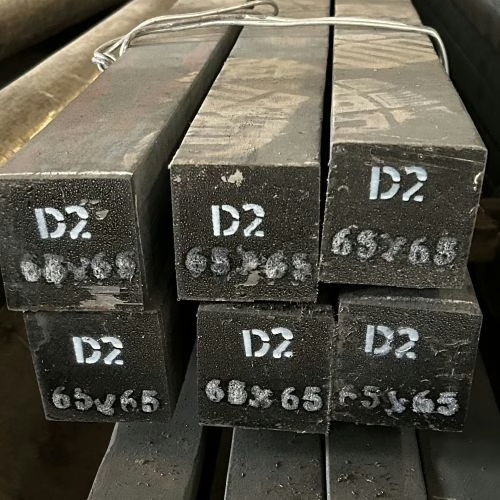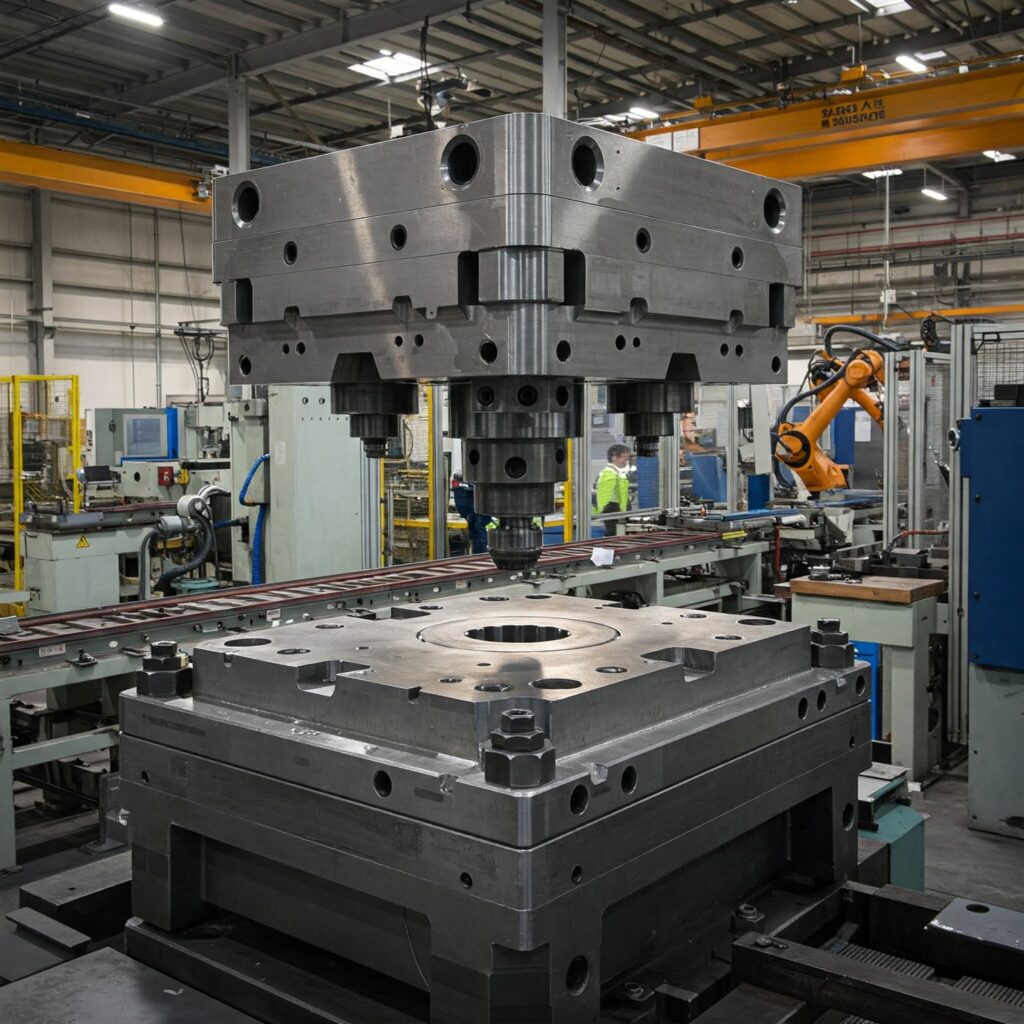Estimated reading time: 6 minutes
Key Takeaways
- D2 tool steel offers high wear resistance but has inherent low toughness and brittleness, making it prone to cracking under stress.
- Machining D2 is challenging due to its hard microstructure, leading to high tool wear and increased production costs.
- Heat treatment must be carefully controlled to avoid issues like retained austenite, which can compromise dimensional accuracy.
- D2 is unsuitable for high-temperature applications and lacks sufficient chromium to prevent rust, demanding protective measures in humid conditions.
- Overall, understanding D2 tool steel disadvantages helps in choosing the right applications and maintaining its performance.
Table of contents

In the tool and die manufacturing industry, AISI D2 (DIN 1.2379) has long been the most important cold-work tool steel due to its high wear resistance and hardness. However, no material is perfect. We understand that to use D2 effectively, one must not only recognize its advantages but also deeply understand its limitations.
Inherent Low Toughness and Brittleness
D2 steel owes its wear resistance to its high carbon and chromium content. These elements form large quantities of hard M7C3 alloy carbides within the steel structure. You can think of these hard carbides as aggregate in concrete—they give the material its abrasion resistance.
However, at the microscopic level, these undissolved hard carbides also act as stress-concentration points where cracks readily form. When comparing D2 to other tool steels like O1 steel in tests, the results are strikingly evident. Most metals undergo a “neckdown” phenomenon—thinning like stretched dough—before breaking. D2, however, exhibits virtually no neckdown, with a surface area reduction of only 1.3% at the fracture point. Its fracture surface remains flat, unlike the cup-cone fracture typical of ductile materials. D2 absorbs almost no energy before failure; once stressed beyond its limit, it does not deform but snaps cleanly.
Poor Machinability and Grindability
In tool-and-die manufacturing shops, engineers often have a love-hate relationship with AISI D2 (DIN 1.2379). They love its exceptional wear resistance once formed into a die, but hate the extreme difficulty of machining it into a die.
The difficulty in machining D2 is closely related to its microstructure. Its high-carbon, high-chromium chemical composition forms numerous high-hardness alloy carbides within the steel. These carbides act like “micro-grinding wheels” distributed throughout the steel, causing severe tool wear during cutting. If we set the machinability of ordinary 1% carbon tool steel at 100 points, then D2 mold steel scores only 45 points. Compared to standard tool steel, machining D2 typically requires lower cutting speeds, more frequent tool changes, and longer processing times. These factors collectively increase both the economic production costs and time expenditures for enterprises.
Beyond the challenges of cutting, grinding is an even higher-risk stage in D2 steel processing. Particularly during precision grinding after hardening, excessive feed rates or inadequate cooling can cause the heat and stress generated by grinding to instantly exceed the steel’s strength limit. This results in visible or microscopic surface cracks on the workpiece, potentially rendering expensive molds unusable in the final processing stage.
Challenges in Heat Treatment and Dimensional Stability
D2 is an air-hardening steel that theoretically exhibits minimal heat-treatment distortion. However, due to its extremely high alloy content, improper control during heat treatment can pose risks. After conventional quenching, D2 typically retains significant amounts of Retained Austenite in its microstructure, sometimes as high as 20%.
What is retained austenite? It is a relatively soft microstructural phase. Retained austenite is unstable. After being left at room temperature for a period of time, it transforms into martensite. This transformation is accompanied by volumetric expansion. Your high-precision molds will expand during storage or use, leading to a loss of dimensional accuracy. For high-precision applications, D2 must undergo cryogenic treatment or multiple high-temperature tempering cycles to eliminate retained austenite.
D2 has poor thermal conductivity. This is akin to pouring boiling water into a thick glass cup on a cold winter day—it can easily shatter. When D2 components are placed in a high-temperature furnace, their surfaces rapidly heat up and expand. However, due to its slow thermal conductivity, the core remains cold. This significant temperature difference between the surface and core generates immense tensile stress, directly causing cracks during the heating phase. Therefore, gradual heating and step heating are essential. Never subject D2 to direct heating; it must be given sufficient time to acclimate.
If you raise the austenitizing temperature too high in pursuit of high hardness, the austenite grains in D2 steel will become extremely coarse. This leads to massive carbide precipitation at grain boundaries, causing severe intergranular embrittlement. The material’s toughness may decrease by as much as 90%, rendering the mold as brittle as glass.
Additionally, when tempered near 515°C (960°F), D2 steel exhibits temper brittleness. If your mold requires a certain degree of toughness, avoid this temperature range. Tempering at 205°C (400°F) is recommended to achieve a better balance of strength and toughness.
Application Limitations and Compromised Corrosion Resistance
Can D2 be used in high-temperature environments? The answer is absolutely not. Many customers mistakenly believe D2 is hard enough for hot forging or high-temperature stamping. This is a grave error. D2 is suitable for room temperature or low-temperature applications. Compared to specialized hot-work tool steels (such as H13) or high-speed steels (such as M2), D2 lacks key alloying elements, including molybdenum (Mo), tungsten (W), and vanadium (V). Once operating temperatures rise, D2 rapidly softens—it lacks red hardness. At elevated temperatures, it loses its hardness, leading to rapid tool wear or deformation.
Does D2’s high chromium content mean it resists rust? The answer is no—D2 is not stainless steel and will rust! Generally, steel with chromium content above 12% is considered to possess stainless steel properties. So why does D2, with its chromium content clearly in the 11.5%-12.05% range, have such poor rust resistance? D2 contains extremely high carbon. These carbon atoms are highly reactive; they bind most of the chromium atoms in the steel, forming hard carbides that provide wear resistance. Stainless steel resists rust because dissolved, free chromium in the matrix forms a passivation film on the surface. In D2, however, the chromium is locked away in carbides, leaving very little free chromium in the matrix—insufficient to form a protective layer. When using D2 molds in humid or corrosive environments, rust prevention measures are essential.


